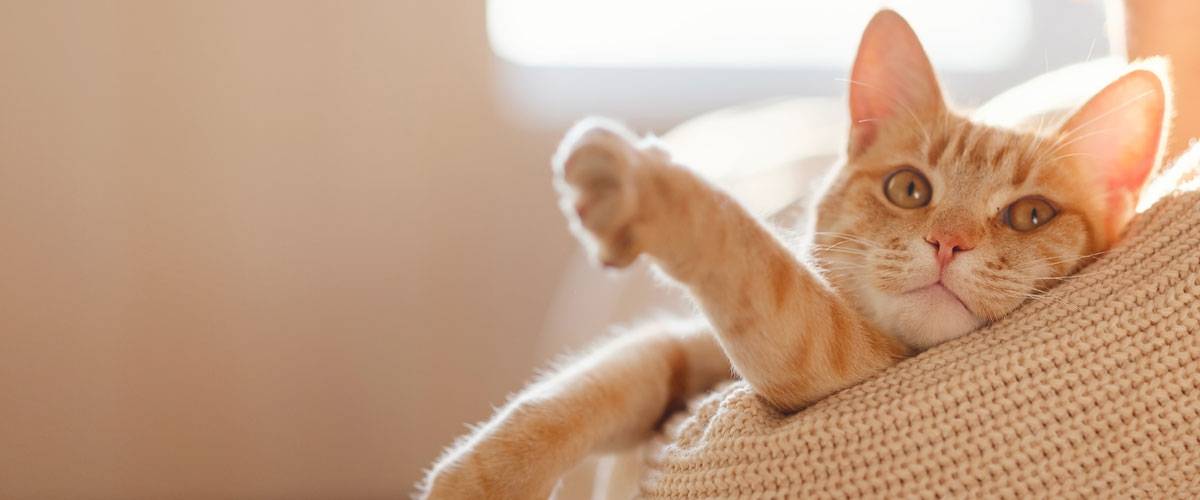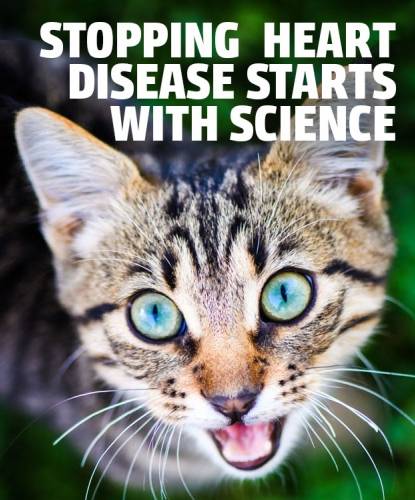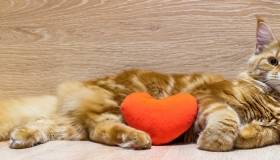
Updated February 22, 2024 – February, a month synonymous with National Heart Month for humans, is also a critical time to spotlight heart disease in cats. Despite being a well-known issue in humans, heart disease is also a significant concern in cats, often going unnoticed until it’s too late.
The most common heart disease diagnosed in cats is hypertrophic cardiomyopathy (HCM). A recent study suggests the disease affects one in seven cats, and hypertrophic cardiomyopathy accounts for more than half of all cases of cardiomyopathy diagnosed in cats.
All cat owners must arm themselves with the latest information about risk factors, signs, diagnosis and treatment of HCM.
Disease Basics
The heart is a specialized muscle that fills with blood and then contracts, ejecting blood to begin its journey to all body parts. Diseases that affect the heart muscle are collectively known as cardiomyopathies. Hypertrophic cardiomyopathy is a type of heart muscle disease characterized by thickening of the heart muscle.
It’s probably helpful to quickly review the basics of heart function.
The heart consists of four chambers separated by valves, which help direct blood flow. The heart walls are specialized muscle tissue that contracts rhythmically. The heart ejects blood to all parts of the body.
In cases of HCM, for reasons that aren’t entirely understood, the heart muscle begins to thicken. This thickening impinges on the heart chamber size, meaning the heart can take in and eject less blood. Eventually, the heart starts to fail. (For more in-depth information, check out our latest blog on heart function).
Risk Factors for HCM
Although any cat can be affected by HCM, there are some known risk factors. These include:
- Maine coon cats, ragdoll cats, sphynx, British shorthair, Chartreux, Persian and Norwegian forest cats are all reported to have a higher incidence of the disease.
- Some studies suggest that male cats are more commonly affected
- Experts have identified a mutation that causes HCM in Maine Coons and ragdolls.
- Experts recently reported a potential mutation causing HCM in Sphynx cats.
It’s important to remember that any cat, male or female, of any breed can develop HCM.
Cat breeders should consult with their veterinarian about testing for mutations associated with HCM and for guidance on breeding.
Recognizing Clinical Signs
Diagnosing hypertrophic cardiomyopathy in cats is not easy. Cats are masters at masking when they’re ill. However, there are signs your cat might have hypertrophic cardiomyopathy.
These include:
- Difficulty breathing or increased respiratory rate
- Sudden hind limb paralysis due to a blood clot in the rear legs (called arterial thromboembolism, ATE)
- Anorexia and lethargy
- Weight loss
Unfortunately, many cats exhibit no signs until they’re either in heart failure or develop arterial thromboembolism. Worse yet, hypertrophic cardiomyopathy can cause sudden death.
In a cat without clinical signs, physical exam findings can point to possible HCM. These include a heart murmur, particularly in cases where one has never been detected before, or a gallop rhythm, an irregular heartbeat seen when a veterinarian listens to the heart. In some patients, ruling out other diseases can help narrow the diagnosis.
Arterial Thromboembolism: A Serious Consequence of HCM
Cats with HCM are prone to abnormal blood clot formation. Blood clots form because flow through the diseased heart is abnormal, causing platelets to stick together. These clumps can then flow out of the heart, where they can get “stuck” in a blood vessel – similar to a stroke in people. This condition is known as arterial thromboembolism (ATE).
A common place for these clots to lodge is where the main arteries to the rear legs begin. The sudden loss of blood supply to the hind legs is excruciating, and emergency treatment is required to help re-establish blood flow and prevent more abnormal clots from forming.
Once considered an almost universally fatal complication, advances in treatment options have improved the odds for cats with ATE. However, the best treatment is still prevention through early diagnosis of HCM and preventive anticoagulant therapy.
(You can learn more about ATE here).
Imaging is Critical for Making the Diagnosis
The gold standard for diagnosis of HCM remains an echocardiogram. Routine X-rays are sometimes helpful for ruling out other problems and can aid in the diagnosis but usually aren’t beneficial in confirming if a cat has HCM or other form of heart disease.
Recent studies have examined whether blood tests measuring heart biomarkers could help diagnose HCM since many veterinarians lack the training or equipment to perform a thorough echocardiogram. Although promising, these tests are not sensitive or specific enough to diagnose HCM alone.
Treatment
Once a veterinarian diagnoses the ailment, they tailor treatment options to the patient based on echocardiogram results and clinical signs' presence (or absence). Treatments for hypertrophic cardiomyopathy in cats can include:
- Medications to prevent abnormal blood clots from forming (anticoagulants)
- Diuretics for patients with heart failure
- Medication to treat high blood pressure
- Pimobendan, a drug used to treat heart muscle disorders
- Antiarrhythmics to control irregular heartbeats
As with so many diseases, early detection is critical to helping cats with HCM live longer. Once a cat has heart failure or suffers from ATE, the prognosis for long-term survival is poor.
The good news is that most cats with HCM live normal lives with little to no clinical signs.
Areas of Active Research
There are lots of exciting new studies tackling HCM in cats. One recent study (RAPCAT) tested rapamycin in cats with asymptomatic HCM. The drug slowed heart wall thickening in the treated group, with minimal side effects reported. The number of cats in this study was small – 43 – but the results are promising!
Another study took a closer look at cats that had heart murmurs noted during routine physical examination but had no signs of heart disease. They found that a shocking 66.3% of cats with murmurs had some signs of heart disease! The good news was that a few of these cats had mild disease. The take-home message from this study was that any murmur detected in a cat warrants further work-up.
Lastly, an intriguing paper published by a team in South Korea discussed using AI to look at X-ray images of cats with and without HCM. Historically, X-ray images have not helped diagnose HCM – at least as interpreted by humans. This team reported some success in training an AI system to differentiate cats with and without HCM using X-rays. It’s the early days of this technology, so stay tuned!
The Foundation is a Leader in Funding HCM Research
The Foundation’s work on HCM dates back to 1986! We’ve funded 30 studies that have directly and profoundly impacted how veterinarians diagnose and treat cats with HCM.
Two significant studies supported by the Foundation that caused a buzz in the veterinary world include The REVEAL Study, groundbreaking research focused on health outcomes for cats with early HCM, and FAT CAT, which focused on preventing ATE. These studies changed how veterinarians cared for cats with HCM and saved the lives of untold cats.
Some of our other recently completed studies include taking a deeper dive into the genetics driving HCM in cats and learning more about how the metabolism of drugs used to prevent blood clots from forming.
Take a Listen to Learn More
Our Fresh Scoop podcast is a great place to find more information about heart disease in cats (and we have some great information about heart disease in dogs!) Check out these episodes:
- Episode 3: Feline Hypertrophic Cardiomyopathy
- Episode 5: Mitral Valve Disease in Dogs
- Episode 24: Arterial Thromboembolism in Cats
More Resources
- ACVIM consensus statement guidelines for the classification, diagnosis and management of cardiomyopathies in cats
- Delayed-release rapamycin halts the progression of left ventricular hypertrophy in subclinical feline hypertrophic cardiomyopathy: results of the RAPCAT trial.
Help Us Help Cats
We can’t improve the lives of cats with HCM without the passionate support of our fantastic donors. Learn more about how you can contribute and help cats everywhere live their best nine lives!





